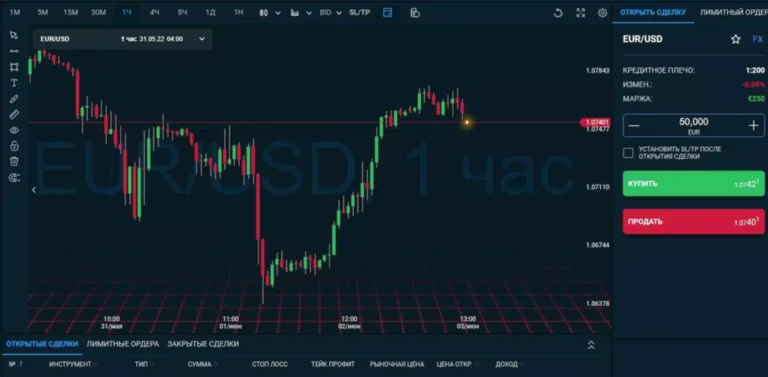For example, these using Binance Staking take pleasure in an APY (annual share yield) of two.9%, as of March 2022. To become a staker/baker on Tezos, a person wants to carry 8,000 XTZ cash and run a full node. Luckily, third get together services have emerged, permitting small coin holders to delegate small XTZ portions What is Crypto Staking and share baking rewards.
- In the well-known Jarretts case, the IRS refunded taxes collected from Tezos staking rewards.
- Staking is the act of handing over your cryptocurrency belongings to their native blockchain, in order to help with the upkeep, security and environment friendly running of the community.
- After that, you need to send funds from the wallet to Ledger and begin staking.
- Next, you’ll be able to search for the crypto you need and purchase it on cryptocurrency apps and exchanges.
- Give desire to well-established blockchains like Ethereum and Solana and do your own research before taking financial risks.
Staking Crypto: Advantages Vs Disadvantages
The program can pay you the return within the staked cryptocurrency, which you can then maintain as an funding, put up for staking, or commerce for cash and other cryptocurrencies. For example, a holder can participate in a staking pool, and stake pool operators can do all the heavy lifting in validating the transactions on the blockchain. When it involves staking rewards, it’s important to clearly understand the earning potential, the size of lockup period, and when payouts occur. Information like this will sometimes be present in a project’s wiki, like this page about Polkadot’s staking rewards. When it involves participation in the staking course of, there are two key roles. While terminology varies from network to network, we’ll describe them here as validators and delegators, and explain each of their roles in detail.
Non-custodial Wallets: Your Keys, Your Crypto
Some of the most well-liked staking tokens embrace Ethereum 2.0, Cardano (ADA), Polkadot (DOT), and Tezos (XTZ). When selecting a cryptocurrency, consider elements corresponding to staking rewards, lock-up periods, and the overall market potential of the token. A staking pool is a bunch of cryptocurrency holders who mix their staking power to extend their chances of being selected as validators. By pooling sources, individuals can earn staking rewards proportionally to their contribution to the pool. Because delegators entrust their crypto to validators, they’re in a place to earn staking rewards, which represent a portion of the validator’s transaction charges. Typically, rewards are described by means of annual proportion yield (APY) and each token has its own rewards construction.
Understanding Non-custodial Wallets
Pools are good for these with smaller holdings or less technical expertise. Once chosen, the validator checks the legitimacy of transactions throughout the block, indicators off on the block, and adds it to the blockchain. In return for his or her companies, validators earn rewards, usually within the form of transaction charges and newly minted coin or stablecoin. These rewards present a continuous incentive for validators to participate truthfully within the network. By staking their cryptocurrency, validators are in a position to help keep the PoS networks safe and receive rewards while doing so. Some blockchains, such as Ethereum, which lately transitioned to PoS in a much-anticipated event called ‘The Merge’, require validators to stake fairly a great amount of native tokens.
Staking To Secure A Community And Earn Rewards
Custodial staking involves transferring your tokens to a staking platform or service supplier. In this arrangement, the platform handles the staking process on your behalf, including the technical elements and the management of your staked tokens. While custodial staking provides convenience and ease of use, it requires placing trust within the platform to deal with your belongings securely. Cryptocurrencies like Bitcoin, which operate on a PoW consensus mechanism, can’t be staked. Even within PoS networks, not all cryptocurrencies help staking, as they may use totally different mechanisms to incentivize participation. However, the exact mechanisms and rules will vary from one staking platform to a different.
The Position Of Validators And Delegators In Staking
Many staking platforms require you to lock up your tokens for a specific period. During this time, you can not access or promote your tokens, which could be a disadvantage if the market shifts unfavorably or if you need liquidity. It’s important to grasp the lock-up terms before committing to staking. When you choose a program, it’s going to inform you what it provides for staking rewards. As of December 2022, the crypto change CoinDCX provides a 5%-20% annual share yield (APY) for Ethereum 2.0 staking.


However, finally this comes right down to how fastidiously you retailer and handle your keys. In addition, many tier-one exchanges like Crypto.com mitigate this with safety measures that defend users’ property in custodial wallets. These wallets serve as an interface to handle your digital assets on blockchains. They enable you to send and obtain cryptocurrencies and connect to dapps with out relying on a third celebration. Some cash permit these with staked belongings to take part within the governance of the community.

Should I Stake My Crypto? The Professionals And Cons Of Crypto Staking
A staking pool allows you to collaborate with others and use less than that hefty amount to stake. But one factor to note is that these swimming pools are usually constructed by way of third-party options. As of this publication, ETH validators usually earn three.6% for staking crypto.
When you stake your cash, you are immediately contributing to the safety and efficiency of the network. Staking helps make the blockchain extra proof against assaults and increases its capability to course of transactions. Staking rewards are usually paid out as a portion of the coin a consumer is staking. However, there are some instances where rewards could also be paid out in a quantity of currencies. For instance, Cosmos is engaged on a service referred to as Interchain Staking, which will allow users staking ATOM to obtain rewards from multiple blockchains in the Cosmos ecosystem.
Staking helps make sure that only legitimate data and transactions are added to a blockchain. Participants attempting to earn an opportunity to validate new transactions provide to lock up sums of cryptocurrency in staking as a type of insurance. Staking rewards differ depending on the staker’s position within the process, the tactic used, or the platform chosen. Validators earn a bigger reward than delegators who’re awarded a portion of the transaction charges a validator collects after creating a model new block. However, a staker has to keep staked cash in the identical handle, since transferring them breaks the lock-up interval, which consequently causes them to lose staking rewards.
To maximise the benefits of these wallets, it’s important to grasp and handle a number of key aspects. For occasion, Kevin is staking 20 ATOM and on average is waiting four days between block rewards, that are 0.1 ATOM. As mentioned previously, staking rewards are typically calculated primarily based on the coin you are staking, the amount staked, and the staking interval.
But the vast majority of users will be higher served by stakingvia a platform similar to Binance.US. To mine major cryptocurrencies these days, you need an extremely powerful, customized computer which may cost 1000’s and even tons of of 1000’s of dollars to construct and function. For instance, within the Ethereum community, slashing can lead to a loss of 1 ETH, representing roughly a 3% loss on a 32 ETH stake deposit. While the probabilities of slashing are relatively low, it is nonetheless an essential risk to concentrate to. Rasul advises that you carefully evaluate the phrases of the staking period to see how lengthy it lasts and how long it might take to get your a reimbursement on the end if you resolve to withdraw. For the aim of comparing some popular tokens for staking, we’ll discuss Ethereum, Cardano, and Polkadot.
With self-custody, you ensure that your belongings are secure because solely you have access to your digital belongings. Privacy is a major benefit of self-custodial wallets, which allow you to transact more anonymously and protect your private data. Unlike custodial services that always require id verification, self-custody allows you to use crypto with out sharing extensive private knowledge. The novelty of staking as an idea and of the crypto ecosystem as a whole makes it probably that we will continue to discover new functionalities of staking. If you’d like to be taught extra about this technique and take part in Wave 3 of Incentivized Advanced Staking, you are capable of do so by studying this blog publish. The major benefit of staking is that you just earn extra crypto, and rates of interest could be very generous.
Staking rewards usually are not released to the staking protocol but rather to your personal pockets as soon as the lockup period has ended. When staking cash, you should know which cryptocurrencies are able to staking.. It looks into varied components that profoundly impact their respective returns and equips the crypto miners with an in-depth analysis. Before you do, Learn about what it’s, the method it works, their pros and cons and choices in this easy-to-follow guide. Similarly, resist the urge to purchase and stake unproven cryptocurrencies you’ve seen hyped on social media.
Read more about https://www.xcritical.in/ here.

